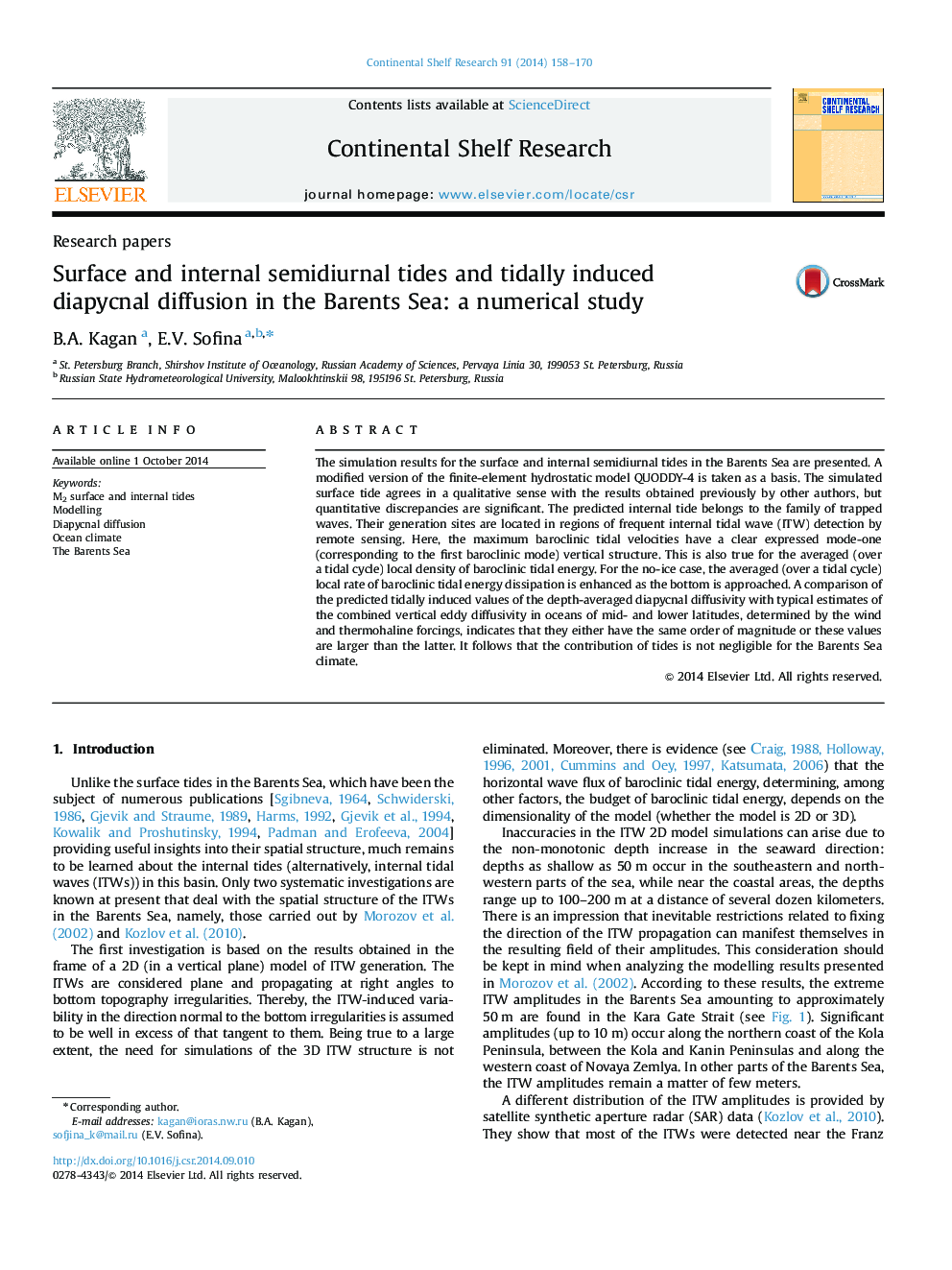| Article ID | Journal | Published Year | Pages | File Type |
|---|---|---|---|---|
| 4531728 | Continental Shelf Research | 2014 | 13 Pages |
•The M2 surface and internal tides in the Barents Sea are simulated.•The M2 internal tidal waves (ITWs) are topographically trapped in nature.•Their generation sites are revealed; they closely coincide with the dissipation sites due to ITW trapping.•The impact of the tidally induced diapycnal diffusivity to the formation of the Barents Sea climate is discussed.
The simulation results for the surface and internal semidiurnal tides in the Barents Sea are presented. A modified version of the finite-element hydrostatic model QUODDY-4 is taken as a basis. The simulated surface tide agrees in a qualitative sense with the results obtained previously by other authors, but quantitative discrepancies are significant. The predicted internal tide belongs to the family of trapped waves. Their generation sites are located in regions of frequent internal tidal wave (ITW) detection by remote sensing. Here, the maximum baroclinic tidal velocities have a clear expressed mode-one (corresponding to the first baroclinic mode) vertical structure. This is also true for the averaged (over a tidal cycle) local density of baroclinic tidal energy. For the no-ice case, the averaged (over a tidal cycle) local rate of baroclinic tidal energy dissipation is enhanced as the bottom is approached. A comparison of the predicted tidally induced values of the depth-averaged diapycnal diffusivity with typical estimates of the combined vertical eddy diffusivity in oceans of mid- and lower latitudes, determined by the wind and thermohaline forcings, indicates that they either have the same order of magnitude or these values are larger than the latter. It follows that the contribution of tides is not negligible for the Barents Sea climate.
